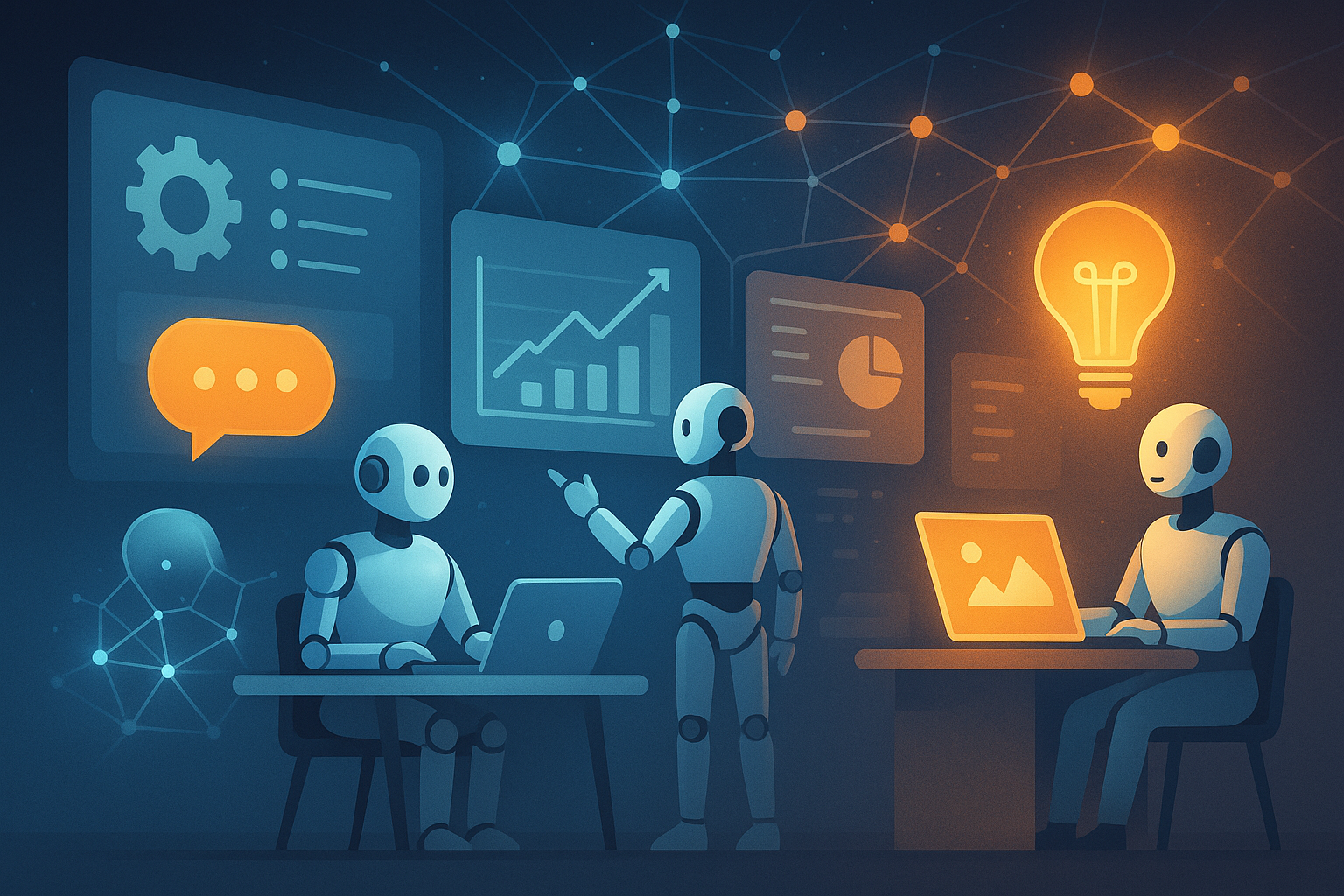How Generative and Traditional AI Combine to Power the Future of Business
AI is everywhere, but not all AI is the same.
Right now, most companies are focused on generative AI. And it’s easy to see why. It’s helping teams write content, build messaging, summarize data, and design user experiences faster than ever. As of early 2025, nearly 90% of enterprises are using generative AI in at least one part of their business.
But while generative AI gets the spotlight, traditional AI continues to handle much of the heavy lifting behind the scenes. It automates repetitive workflows, identifies patterns in structured data, and drives consistent decision-making in areas such as fraud detection, forecasting, and operations.
The real opportunity lies in combining the two. Used together, generative and traditional AI form a powerful foundation for smarter, faster, and more connected businesses.
Understanding how they complement one another—and how to build systems that enable both to thrive—opens the door to intelligent operations, creative scaling, and better results across every team.
Understanding the Two Types of AI: What They Do Best
AI isn’t one-size-fits-all. In fact, the two most important types—traditional AI and generative AI—play very different roles.
Traditional AI follows logic and rules. It’s fast, structured, and accurate, making it a natural fit for tasks like fraud detection, inventory tracking, data classification, and forecasting. It’s the engine that runs quietly in the background, keeping systems moving and decisions consistent.
Generative AI, by contrast, is built to create. It can write content, generate images, suggest ideas, and even build code. It responds to prompts and adapts to input in real-time. Tools powered by generative AI can turn a few bullet points into a polished email or summarize a 20-page document into a clear paragraph.
At a glance:
- Traditional AI is about efficiency, structure, and reliability
- Generative AI is about creativity, context, and adaptability
Each is useful on its own, but together, they unlock new levels of value.

Why Businesses Need Both
It’s tempting to think businesses need to pick one type of AI to focus on. However, the real power lies in blending them into a single, cohesive system.
Here’s how that can work.
Imagine traditional AI detects that a customer’s usage is dropping. It flags the trend, just like it’s supposed to. But what happens next? That’s where generative AI comes in. It takes that data and crafts a personalized message, offering helpful resources or suggesting features based on the customer’s history.
One model spots the issue. The other responds with speed, context, and personalization.
This kind of handoff happens across the organization:
- Issues get detected earlier
- Responses are faster and more relevant
- Teams spend less time on repetitive work
- Customers get better, more human-like experiences
When traditional and generative AI work in tandem, systems don’t just react—they learn, adapt, and improve over time.
What Integration Looks Like in Real Life

Combining generative and traditional AI transforms more than individual processes—it creates an entire intelligence layer across your organization.
In customer support, traditional AI might route tickets and monitor response times. At the same time, generative AI writes helpful replies, solves issues in real time, or drafts documentation that reduces the need for incoming questions.
In sales, traditional AI handles lead scoring and tracks deal progress. Generative AI turns that data into personalized outreach messages, tailored follow-ups, or even pitch decks that align with each buyer’s needs.
And in operations, traditional AI keeps tasks moving—automating approvals, flagging anomalies, and managing schedules. Generative AI adds clarity by generating simple summaries, updating reports, or transforming raw data into actionable decisions.
Across each use case, the pattern is the same: traditional AI handles structure, while generative AI adds context and creativity. When both are connected, the result is a business that doesn’t just work harder—it works smarter.
How to Make It Work: Building the Right System
To fully unlock the value of generative and traditional AI, you need more than good tools—you need the right setup. That begins with designing systems that allow both models to operate clearly and effectively.
Define Clear Roles
Start by assigning the right jobs to the right models. Traditional AI is ideal for repetitive, rules-based tasks. Generative AI is best suited for use where language, content, or personalized interaction is required. When each model knows its role, everything runs more smoothly.
Support Structured and Unstructured Data
Both models rely on data, but they process it in different ways. Traditional AI works best with structured data, such as spreadsheets or labeled forms. Generative AI thrives on unstructured content, such as text, emails, and chat logs. Your system should be able to handle both and connect them where needed.
Create Feedback Loops
Every output is a learning opportunity. If a generative AI draft performs well, that insight should inform future content. If a traditional AI rule misfires, that feedback should be captured to improve accuracy. The more your system learns from outcomes, the more intelligent it becomes.
Keep Humans in the Loop
Not every task should be left to automation. High-risk areas—such as legal, compliance, or sensitive customer communications—still benefit from human oversight. Make space for review and refinement to ensure your AI systems remain aligned with your brand, voice, and values.
The goal isn’t just automation—it’s confidence. With the right system in place, your teams can trust the tools they use, and the tools can support the decisions your business makes.
Where This Leads: A Smarter, Connected Business
When AI systems work in isolation, teams stay siloed, data goes unused, and opportunities are missed. However, when generative and traditional AI are integrated, something powerful happens: your business begins to think together.
Customer behavior can influence product design. Sales trends can inform marketing strategy. Support conversations can guide content and training. Suddenly, your tools are no longer just solving individual problems—they’re feeding each other insights and improving the system as a whole.
That’s the shift from using AI tactically to using it strategically. It’s not about replacing people or chasing new tools. It’s about building an intelligent framework that helps the entire organization move faster, connect better, and grow smarter.
Unified Intelligence Is the Future
Generative and traditional AI aren’t competing approaches—they’re two halves of a smarter whole.
When traditional AI handles structure and logic, and generative AI adds creativity and adaptability, the result is more than automation. It’s a connected system that learns, scales, and improves across every function in your business.
The future of work won’t be driven by a single type of intelligence. It will be shaped by systems that are built to balance both, intentionally, strategically, and with real results in mind.
That’s not just good technology. That’s intelligent business design.




